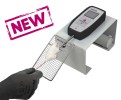Authors
Ding YM, Zhu JY, Zhang SJ, Zhang SS, Wang C, Wang LL, Zhang X
Lab
Department of Clinical Medicine, School of Medicine, Zhejiang University City College, Hangzhou, Zhejiang, China
Journal
Genet Mol Res.
Abstract
Tetradecyl 2,3-dihydroxybenzoate (ABG001) is a small molecule separated from gentian extract that has a similar effect to nerve growth factor. It is not clear whether it can promote functional recovery in animals suffering from a central nervous system injury. In order to explore the role of ABG001 in restoration of tissue structure and motor function of rats with spinal cord injury (SCI), ABG001 (0.4 mg/kg) was administered intraperitoneally. Subsequently, behavioral assessments and morphological studies were performed to detect recovery of hind limb motor function and neuroregeneration. The results showed that compared with DMSO group, the rats in the ABG treatment group had better performance in BBB score and grip strength test (P < 0.05), the area of necrosis was smaller (P < 0.05), GFAP expression was significantly reduced (P < 0.01), and Map-2 expression was significantly increased (P < 0.01). Additionally, after ABG treatment, the number of fluorogold positive cells transported reversely to red nucleus increased (P < 0.05). The results suggest that ABG001 can promote recovery of hind limb motor function in rats with SCI, which may be related to its functions of inhibiting glial cell proliferation and promoting neuroregeneration.
BIOSEB Instruments Used:
Grip strength test (BIO-GS3)

 Pain - Thermal Allodynia / Hyperalgesia
Pain - Thermal Allodynia / Hyperalgesia Pain - Spontaneous Pain - Postural Deficit
Pain - Spontaneous Pain - Postural Deficit Pain - Mechanical Allodynia / Hyperalgesia
Pain - Mechanical Allodynia / Hyperalgesia Learning/Memory - Attention - Addiction
Learning/Memory - Attention - Addiction Physiology & Respiratory Research
Physiology & Respiratory Research
 Pain
Pain Metabolism
Metabolism Motor control
Motor control Neurodegeneration
Neurodegeneration Cross-disciplinary subjects
Cross-disciplinary subjects Muscular system
Muscular system General activity
General activity Mood Disorders
Mood Disorders Other disorders
Other disorders Joints
Joints Central Nervous System (CNS)
Central Nervous System (CNS) Sensory system
Sensory system
